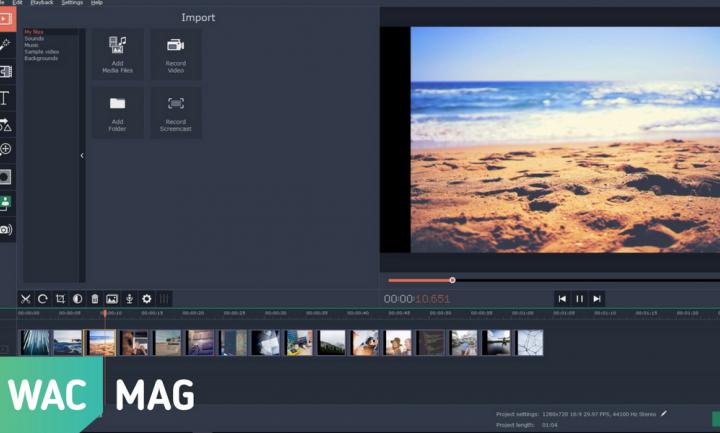4 Key Post-Production Improvements That Could Transform a Video Completely
Image

As the final stage in creating videos, it goes without saying that post-production will play an important role in how it turns out. During this stage, you’ll start to knit together all the raw footage that you’ve recorded and come up with the video’s final cut.
On top of that, the post-production stage is when you’ll have the chance to make other improvements to your video, and fix various issues as well. While there are lots of potential improvements that you could make, some could actually transform your video’s look and feel completely:
Using color correction to balance the light
More often than not raw footage isn’t very balanced, and some shots may have too much light while others may have too little. On top of that, the color of the light may vary from shot to shot as well.
Color correction aims to adjust the color of the light in each shot so that its exposure and white balance match more closely. Without it when you transition from one shot to another there will be a jarring difference, and the video won’t look as fluid.
To correct the exposure and white balance, some shots you may need to brighten a video as well as adjust its contrast, saturation, and other color parameters. Most video editors have automated tools to make this easier, for example, Movavi Video Editor’s ‘Magic Enhance’ feature.
It is important to note that color correction is not the same as color grading, which is also designed to alter the light and give videos a particular appearance. With color correction, the aim is to balance the light so that each shot matches and looks the way it normally does – whereas color grading is designed to stylize the video.
Mixing the audio and improving its quality
Poor quality audio can completely ruin a video and even if the image quality of the video is top notch it will put off viewers. That is why a key improvement that is made in the post-production stage is to mix the audio and improve its quality.
There are numerous techniques involved in mixing and improving the audio, and it is a bit of an art form in its own right. That being said the goal is for all the audio to sound clear, which is normally done by minimizing distortions, removing background noise, and balancing the sound levels of the audio.
Sometimes it may not be possible to improve the audio enough when mixing it, in which case some parts may need to be removed completely and maybe re-recorded.
Reframing video footage
At times the framing of some shots may be a little bit off, in which case you can reframe it in post-production. Normally there are two main tools that are used to reframe videos: Crop and rotate.
Rotating shots will give you the opportunity to level them out, whereas cropping will let you directly readjust the frame itself. When you do reframe the video however you will need to ensure that it retains the same aspect ratio.
While reframing gives you the opportunity to completely re-engineer how your shots look – there are limitations to what you can do. If you’re forced to crop out too much of a shot the remaining material will have a much lower resolution and the video quality will be affected.
However, if you’re just reframing the video by adjusting it slightly the difference won’t be noticeable.
Adding background music to the video
Including background music in videos can have a transformative effect on the tone and pace of the video. But just because you’ve chosen a particular music track it doesn’t mean that you need to play the entirety of that track throughout the video.
When adding background music in the post-production stage you will need to make key decisions as to where you want to insert it. In some videos you may only play music at the start and the end of the video (book ends), or at certain specific points throughout the video (sporadic).
Ideally, you should match the intensity and tone of the music to shots in the video. Sometimes you may even want to cut forward or loop the music to sync it with the video better.
By this point, you should be able to see how these four improvements could dramatically alter your video and transform it completely. Just remember that as much as these are key post-production improvements they do not necessarily need to be used in every video and you will need to decide whether or not your video requires them in the first place.
Additionally, you may have noticed that visual effects weren’t discussed at all. That is because as much as visual effects such as filters, transitions and other special effects can improve and transform a video they are more situational and should be used sparingly and tastefully.
In any case, now that you’re aware of some of the more important parts of post-production you can try to carry them out the next time you create a video and see for yourself the impact they will have.





